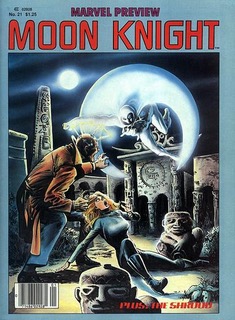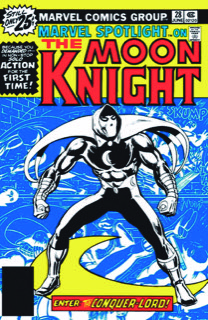Marvel did a nasty thing in the mid-1970s and it’s something every collector and dealer should keep track of when dealing with a comic or a collection from that era.
The dreaded Marvel Value Stamp (MVS) has left a swath of devastation and broken dreams, destroying many comics, slashed market values off books to mere pennies on the dollar. To be less dramatic, comic book readers cut out these stamps, leaving a gapping hole in the pages they once graced, either in the letters or the bullpen bulletins page. The damage dramatically reduces the grade and value of the book.
The original MVS consisted of Series A and Series B. Readers were urged to clip these drawings about the size of a commemorative postage stamp out of the book and paste them into a MVS booklet. The first series were stand-alone drawings, while the second series consisted of one-by-two inch puzzle pieces that create a one of 10 larger images of a character.
Both are equally the bane of comic collectors.
The first series appeared in Marvel comics published between March 1974 and November 1975 involving more than 300 issues, while the second series offered puzzle pieces between December 1975 and August 1976. Each series were made up of 100 images.
Marvel offered Marvel Value Stamp Books to paste the pieces into, and they have their own collectors’ market.
To be fair, Marvel more than likely saw this as a marketing promotion to create some buzz about its books, and create demand for a new product, the stamps book. No one, I’m sure, thought that this would ruin comic books that would one day be worth thousands of dollars. Nevertheless, here we are.
Some of the most important Marvel Bronze Age books carried an MVS. The Incredible Hulk 181, with the first full appearance of Wolverine, contained an MVS with an image of Shanna the She Devil. If the MVS was cut out leaving a hole in the page, a Near Mint copy of the book (value about US $3,500) would be rated as a Good (value about $250), wiping away at least 90 per cent of its value.
There aren’t many collectors or dealers who haven’t been stung by The Missing MVS. My experiences have been few but nevertheless frustrating, especially when a dealer is guilty of passing off a damaged book as an undamaged book.
I recalled buying a run of mid-grade Adventure into Fear issues starring Morbius the Living Vampire, a desirable series and the apparent focus of an upcoming live production. Assuming the books were okay cost me — not dearly, fortunately — as the dealer didn’t grade and price them appropriately. While it’s ethically wrong if a person knowingly sells a comic with the MVS cut out as a higher grade book, buyers should beware and carefully look in the book to ensure the stamp remains intact.

Here’s a few things to look out for: the books have for the most part a cover price of 25 cents. Check either the Marvel Bullpen Bulletins page or the letters page to see if the stamp is there. Not all comics in that era had an MVS. The value of the book is between a Good and a Very Good Minus if the MVS is missing and if the missing piece affects the story and art on the other side of the page.
Fast forward to 2017 — when you’d think marketers have at least heard a whisper that the idea is scorned upon by the masses — Marvel announced Series C, a 53-stamp run in its Legacy series issues, that were inserted into the books. If missing, the value of the book is just marginally less than guide than those with stamps
••• Oh, look. Another Marvel character is getting its extreme close-up.
Moon Knight, it appears, will be a movie, apparently part of Marvel’s Cinematic Universe Phase Four. And we all know what that kind of treatment does to comic values. Up, up and away!
Two key books with the character Moon Knight, Werewolf by Night 32, the first appearance of the character published in 1972, and Werewolf by Night 33, retail values have soared, pushing up demand for other secondary appearances and books of the character.
To show how wild the market is for this character, a New York City-based comics seller has a 9.8 graded WBN 32 (which is near perfect as 10 is the highest) for sale for $39,000. Why is the first appearance issue so hot? No one I’ve ever spoken to about it can say it’s one particular thing, other than both characters, the Werewolf and Moon Knight, are, well, cool. Some argue Moon Knight is Marvel’s answer to Bat Man. Huh.
Maybe it’s physical. The particular shade of blue used in the background of WBN 32 makes the issue difficult to find in higher grades. Certain colours are prone to show wear and tear more than lighter colours. A study of covers like Amazing Spider-Man 28 with the first appearance of Molten Man shows why.

Nevertheless, WBN 32 and to a lesser degree 33 have been highly desirable in high grade by collectors since the 1980s, and 32 was considered an easy sell in high grade at multiples of guide value. Since then, other appearances have gained interest among collectors, including the character’s first solo appearance in Marvel Spotlight 28 from 1976, Marvel Preview 21 and Moon Knight 1, both from 1980.
Cool is not usually the driver of collectables values, but as long as demand exceeds supply, especially in the higher grades, the price will remain in the stratosphere. And a decent movie or television show provides fuel for the market. But at those kinds of prices — thinking about the cliche of what goes up… — it would be wise to collect responsibly.


